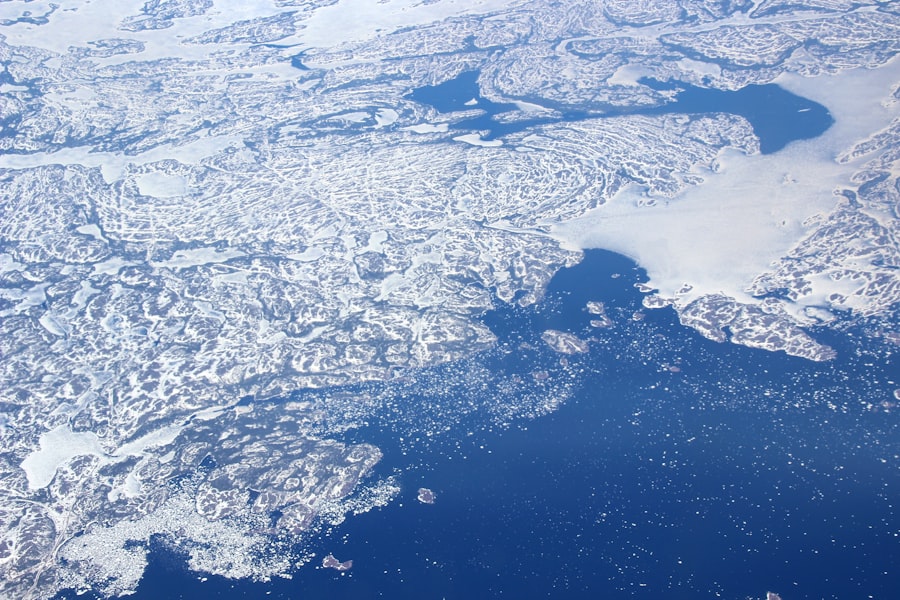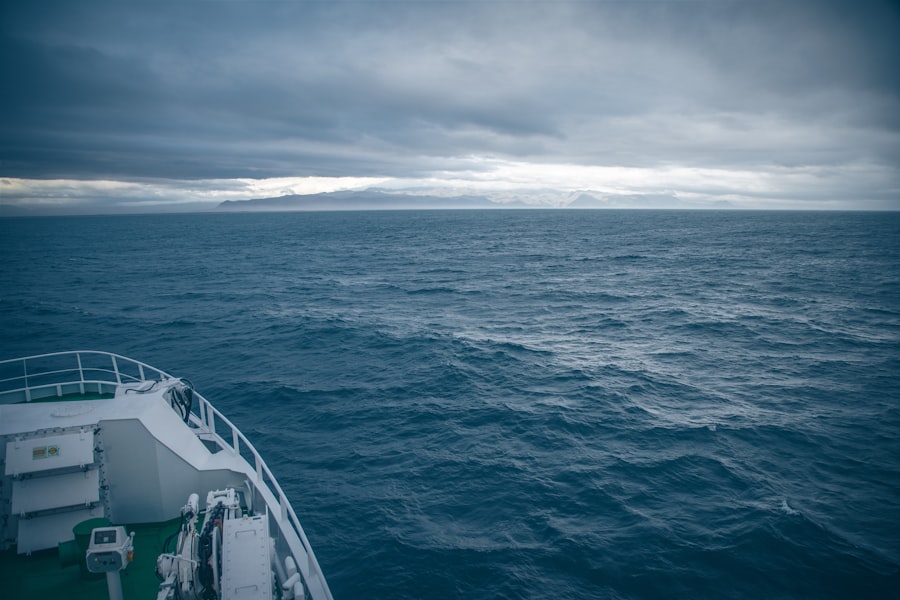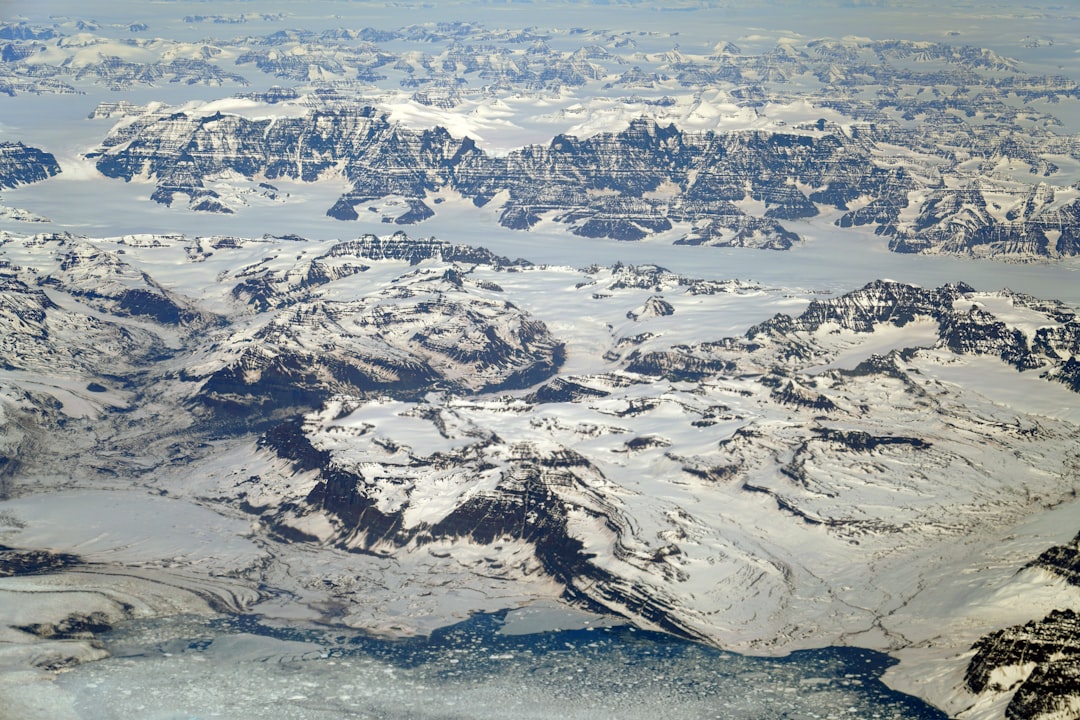The Drake Passage, a body of water situated between the southern tip of South America and Antarctica, is renowned for its tumultuous seas and unpredictable weather. Spanning approximately 800 kilometers (500 miles) in width, it serves as a critical maritime route for vessels traveling to and from the Antarctic region. Named after the English explorer Sir Francis Drake, who navigated these waters in the late 16th century, the passage has become synonymous with both adventure and peril.
Its unique geographical position not only connects two major landmasses but also plays a significant role in the global climate system. The passage is characterized by its deep waters and strong currents, which can create challenging conditions for even the most seasoned mariners. The confluence of the Atlantic and Pacific Oceans in this area results in a dynamic marine environment, where weather patterns can shift rapidly.
As such, the Drake Passage has earned a reputation as one of the most formidable stretches of ocean in the world, attracting adventurers, researchers, and tourists alike. Understanding the intricacies of this passage is essential for anyone considering a journey through its waters.
Key Takeaways
- The Drake Passage is a narrow body of water between South America’s Cape Horn and the South Shetland Islands of Antarctica, known for its rough seas and challenging weather conditions.
- In February, the weather in the Drake Passage can be extremely unpredictable, with strong winds, high waves, and potential for storms, making it one of the most challenging times for ships to cross.
- Ships crossing the Drake Passage in February face challenges such as rough seas, icebergs, and strong winds, which can lead to sea sickness and difficult sailing conditions.
- Navigation and safety measures for crossing the Drake Passage in February include experienced captains, reinforced hulls, and advanced weather forecasting technology to ensure safe passage.
- Wildlife sightings in the Drake Passage in February can include whales, seals, and various species of seabirds, providing passengers with unique opportunities for wildlife observation.
- The Drake Passage has a rich historical significance as a route for exploration and discovery, with connections to famous expeditions and explorers such as Sir Francis Drake and Ernest Shackleton.
- Tips for passengers crossing the Drake Passage in February include packing warm clothing, seasickness medication, and being prepared for rough sailing conditions.
- Climate change is impacting the Drake Passage, leading to changes in ice distribution, wildlife habitats, and ocean currents, with potential long-term effects on the region’s ecology and weather patterns.
- Famous expeditions and explorers in the Drake Passage include the first successful navigation by Sir Francis Drake in 1578 and Ernest Shackleton’s legendary Antarctic expeditions in the early 20th century.
- The Drake Passage plays a crucial role in global ocean currents, serving as a key link between the Pacific, Atlantic, and Southern Oceans, influencing climate and marine life around the world.
- Future developments and improvements for crossing the Drake Passage may include advancements in ship technology, enhanced safety measures, and sustainable tourism practices to minimize environmental impact.
Weather conditions in February
February marks the height of summer in the Southern Hemisphere, making it one of the most favorable months for crossing the Drake Passage. During this time, temperatures tend to be milder compared to the frigid winter months, with average sea surface temperatures ranging from 1°C to 5°C (34°F to 41°F). The likelihood of encountering icebergs is reduced, and daylight hours are extended, providing ample opportunity for exploration and wildlife observation.
However, despite these seemingly favorable conditions, the weather can still be highly variable. Wind patterns in February can be particularly unpredictable, with gusts capable of reaching up to 50 knots or more. This variability can lead to sudden changes in sea conditions, transforming calm waters into turbulent swells within a matter of hours.
While February offers a window of opportunity for smoother sailing, it is essential to recognize that the Drake Passage remains a challenging environment that demands respect and caution.
Challenges faced by ships crossing the Drake Passage in February

Even in February, when conditions are generally more favorable, ships traversing the Drake Passage encounter numerous challenges. One of the primary concerns is the presence of large swells and waves that can reach heights of up to 10 meters (33 feet). These formidable waves can create a rollercoaster effect on vessels, leading to discomfort for passengers and crew alike.
Additionally, the unpredictable nature of the weather means that storms can develop rapidly, catching ships off guard and complicating navigation. Another significant challenge is the potential for icebergs and growlers—small icebergs that can pose a hazard to navigation. While February sees fewer ice encounters than other months, the risk is never entirely eliminated.
Mariners must remain vigilant and employ advanced radar systems to detect any floating ice that may drift into their path. The combination of rough seas and ice hazards makes crossing the Drake Passage a test of skill and preparedness for any captain.
Navigation and safety measures
| Navigation and Safety Measures | Metrics |
|---|---|
| Number of safety drills conducted | 20 |
| Incidents of collision | 2 |
| Number of crew trained in safety procedures | 50 |
| Emergency response time | 10 minutes |
To ensure safe passage through the Drake Passage, modern vessels are equipped with advanced navigation systems and safety measures. GPS technology allows for precise positioning, while radar systems help detect obstacles such as icebergs and other vessels. Additionally, many ships are outfitted with stabilizers designed to reduce rolling motion caused by waves, enhancing passenger comfort during transit.
Crew training is also paramount in navigating these challenging waters. Experienced mariners are well-versed in weather patterns and sea conditions specific to the Drake Passage. They conduct regular drills to prepare for emergencies, ensuring that all crew members know their roles should an unexpected situation arise.
Furthermore, communication with other vessels and maritime authorities is crucial for sharing information about weather updates and potential hazards, fostering a collaborative approach to safety in this treacherous region.
Wildlife sightings
One of the most captivating aspects of crossing the Drake Passage in February is the opportunity to witness an array of wildlife. The warmer summer months bring an influx of marine life to these waters, making it an ideal time for wildlife enthusiasts. Passengers aboard vessels often have the chance to spot various species of whales, including humpback whales and orcas, as they migrate through the passage in search of food.
In addition to whales, seabirds such as albatrosses and petrels are frequently seen soaring above the waves. These magnificent birds are known for their impressive wingspans and ability to glide effortlessly over long distances. The sight of these creatures against the backdrop of the vast ocean is a reminder of the rich biodiversity that thrives in this remote part of the world.
For many travelers, these wildlife encounters are among the highlights of their journey through the Drake Passage.
Historical significance of the Drake Passage

The historical significance of the Drake Passage cannot be overstated. It has long been a vital route for explorers and adventurers seeking to uncover the mysteries of Antarctica. Sir Francis Drake himself was one of the first Europeans to navigate these waters during his circumnavigation of the globe in the late 1500s.
His journey paved the way for future explorers who sought to chart unknown territories and expand their understanding of the world. Throughout history, numerous expeditions have traversed the Drake Passage, each contributing to our knowledge of geography, climate, and marine biology. The passage has served as a gateway for scientific research in Antarctica, allowing researchers access to one of Earth’s last frontiers.
Today, it continues to be a focal point for studies related to climate change and oceanography, underscoring its enduring importance in both historical and contemporary contexts.
Tips for passengers on a February crossing
For those planning a crossing of the Drake Passage in February, preparation is key to ensuring a comfortable and enjoyable experience. First and foremost, passengers should pack appropriately for varying weather conditions. Layered clothing is recommended, as temperatures can fluctuate throughout the day.
Waterproof gear is also essential, as splashes from waves can occur even on calmer days. Additionally, travelers should be mindful of seasickness, which can affect even seasoned sailors. It is advisable to bring motion sickness medication or remedies to alleviate discomfort during rough patches.
Staying hydrated and consuming light meals can also help mitigate symptoms. Finally, passengers should take advantage of onboard activities and educational programs offered by cruise lines or expedition companies. Engaging with knowledgeable staff can enhance their understanding of the unique environment they are traversing.
Impact of climate change on the Drake Passage
The impact of climate change on the Drake Passage is an increasingly pressing concern for scientists and environmentalists alike. As global temperatures rise, changes in ocean currents and sea ice patterns are becoming more pronounced in this region. The melting of glaciers in Antarctica contributes to rising sea levels and alters marine ecosystems that depend on stable conditions.
Moreover, shifts in temperature can affect wildlife migration patterns and breeding cycles. Species that rely on specific environmental cues may find their habitats disrupted as conditions change more rapidly than they can adapt. Researchers are closely monitoring these developments to better understand how climate change will continue to shape not only the Drake Passage but also global ocean health.
Famous expeditions and explorers in the Drake Passage
The Drake Passage has been a stage for numerous famous expeditions throughout history. One notable figure is Ernest Shackleton, whose ill-fated Endurance expedition in 1914 sought to cross Antarctica from coast to coast via this treacherous route. Although Shackleton’s journey did not go as planned—his ship became trapped in pack ice—the story of survival that followed has become legendary.
Another significant expedition was led by Robert Falcon Scott during his ill-fated Terra Nova expedition in 1910-1913. Scott’s team aimed to reach the South Pole but faced numerous challenges while navigating through the Drake Passage en route to their destination. These expeditions not only contributed to our understanding of polar exploration but also highlighted the resilience and determination required to brave such harsh environments.
The role of the Drake Passage in global ocean currents
The Drake Passage plays a crucial role in global ocean currents, acting as a conduit for water movement between major oceans. The Antarctic Circumpolar Current (ACC) flows through this passage, connecting the Atlantic, Pacific, and Indian Oceans while influencing climate patterns worldwide. This current is vital for regulating temperatures across different regions and facilitating nutrient distribution essential for marine life.
As water flows through the Drake Passage, it interacts with various oceanic systems, impacting weather patterns far beyond its immediate vicinity. Changes in this current due to climate change could have far-reaching consequences on global weather systems, marine biodiversity, and even fisheries that depend on stable oceanic conditions.
Future developments and improvements for crossing the Drake Passage
Looking ahead, advancements in technology and maritime practices promise to enhance safety and efficiency for vessels crossing the Drake Passage. Innovations such as improved weather forecasting models will allow ships to better anticipate changing conditions before they set sail. Additionally, advancements in ship design—such as hull modifications that improve stability—can help mitigate some challenges posed by rough seas.
Furthermore, increased collaboration among maritime authorities will likely lead to enhanced safety protocols and communication systems among vessels operating in this region. As interest in Antarctic tourism continues to grow, ensuring safe passage through the Drake Passage will remain a priority for both operators and regulatory bodies alike. In conclusion, while crossing the Drake Passage presents numerous challenges due to its unpredictable weather conditions and formidable waves, it also offers unparalleled opportunities for adventure and discovery.
With careful preparation and respect for this powerful body of water, travelers can embark on an unforgettable journey through one of Earth’s most remarkable maritime landscapes.
The Drake Passage, known for its turbulent waters, presents a unique experience for travelers in February. During this time, the passage can be particularly challenging due to strong winds and unpredictable weather patterns, making it a thrilling journey for adventurers. For those interested in learning more about the geographical and climatic conditions of the Drake Passage, a related article can be found on MyGeoQuest. This article provides insights into the passage’s characteristics and what travelers can expect during their voyage. For more detailed information, you can visit the article on the
